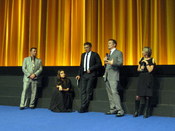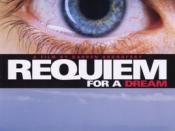"Trainspotting" and "Requiem for a Dream":Two Drug Movies and their different approach to a social phenomenonTrainspotting and Requiem for a Dream are considered by most movie-lovers to be the most realistic and frankest drug movies ever created. Even though the former was released five years before the latter, they both represent quite accurately the same generation and its characteristics in a vivid and sometimes brutal manner. Despite their striking similarities, the two films differ greatly in content, style, atmosphere and the message the one sends out is unique and has nothing to do with the other's; they have a different purpose even though they address to the same audience.
The fact that Trainspotting is British and Requiem For A Dream American reveals a lot about the way each one approaches the same disturbing issue; drug addiction. Danny Boyle's Trainspotting is easy to watch, as it is not as dark and depressive as Darren Aronofsky's Requiem.
The Scottish accent heroes use, although it is sometimes difficult to follow, is still amusing and not only enhances the humorous scenes, but it also lightens up the gloomy ones. Furthermore, as Janet Maslin comments, the characters "are funny, sharp, well played and fiercely memorable, whether cavorting Beatle-like for the camera or delivering sardonic commentary on one another". On the other hand, Requiem for a Dream can exhaust the viewer. There is no comic relief anywhere in the movie and it has been described by many as a "living nightmare". The reason for this difficulty to watch lies mainly on the way the film is shot and especially the sequence of the scenes; as the plot unfolds and heroes are headed to their self-destruction, the movie "follows the rapid and horrifying out of control spiral that consumes all of their lives" (Shea).


